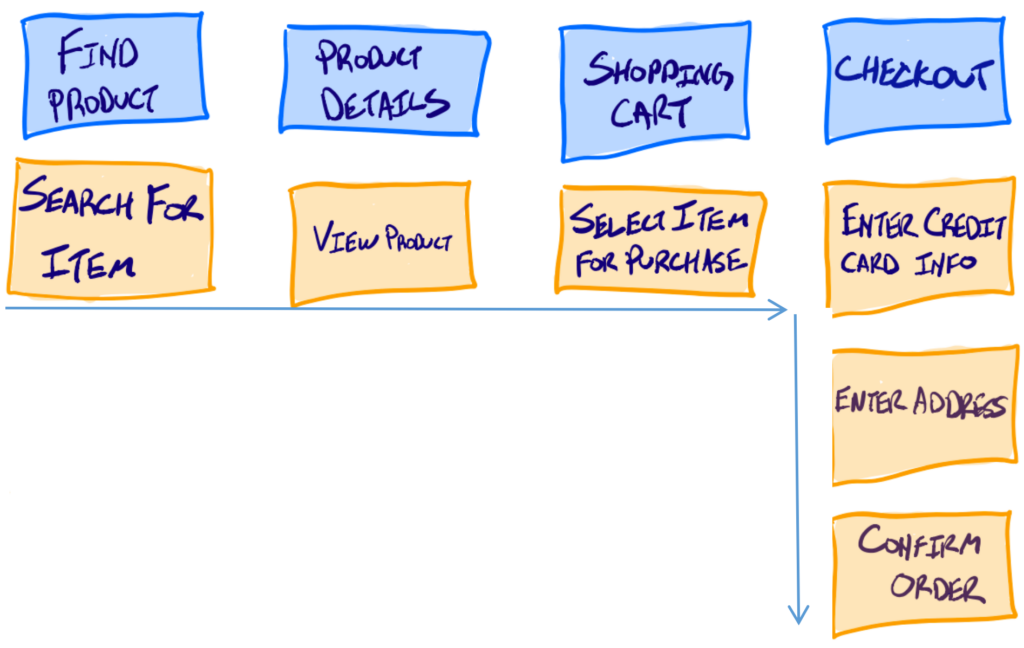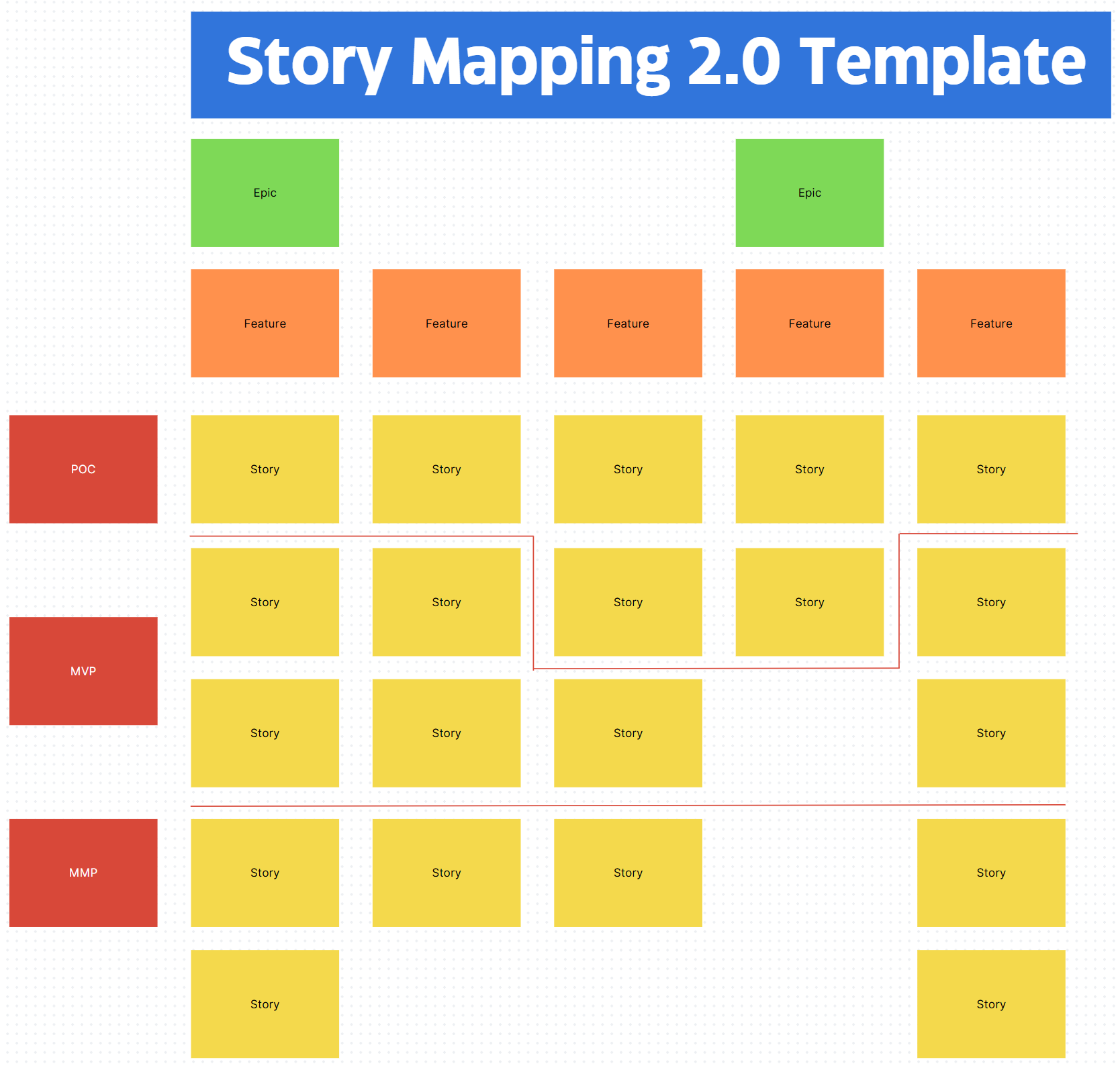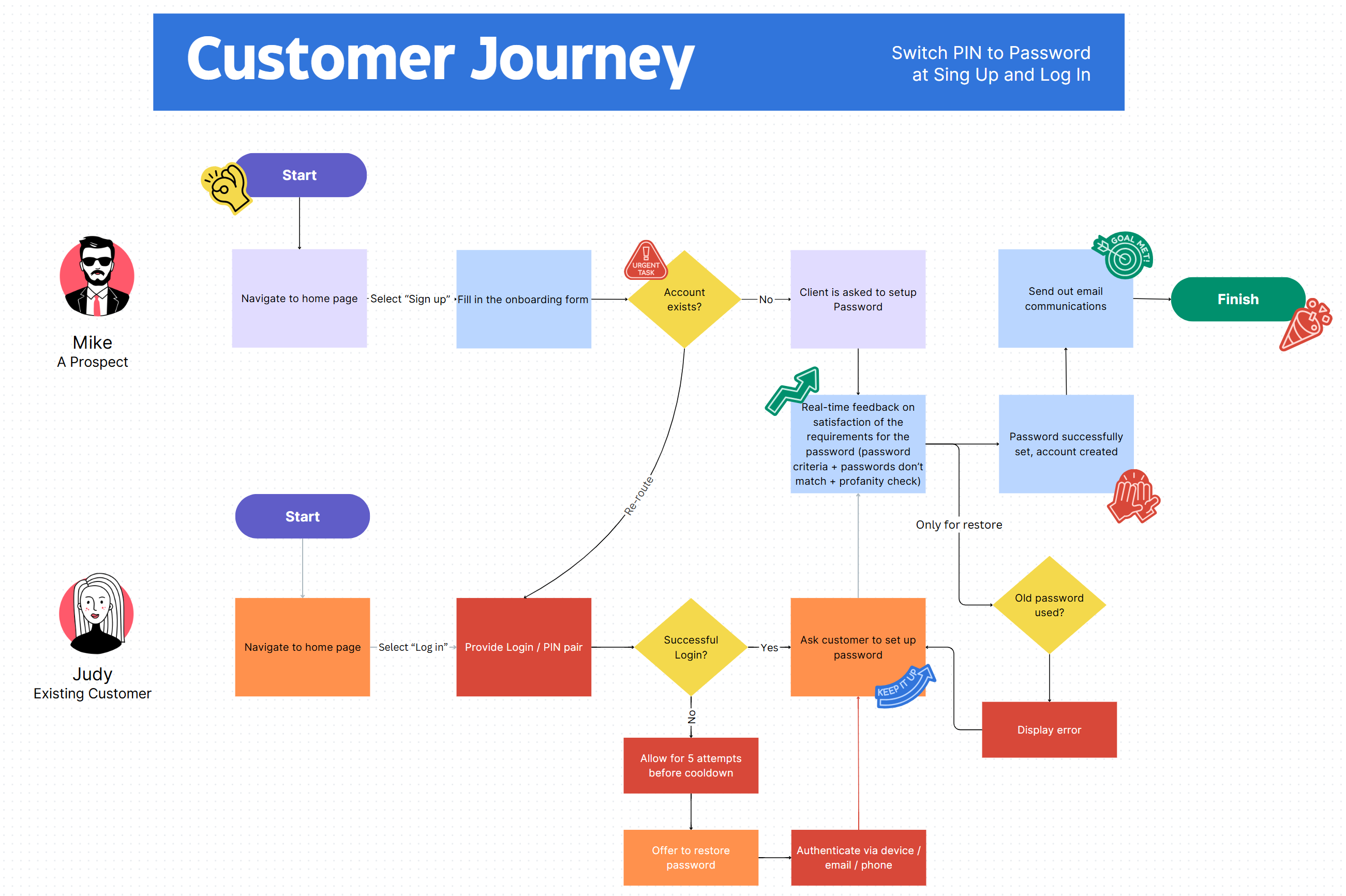Listen to the podcast version:
A Story Mapping Workshop is a collaborative session where teams focus on understanding the end-to-end user journey and break it down into valuable, outcome-driven user stories. The goal is to visualize how users interact with the product or service, identify value-bearing use cases (scenarios), and write stories that deliver the most customer value. Once stories are mapped, an additional step can be taken to identify the MVP and plan incremental releases that offer meaningful user experiences.
Who is invited?
- The entire team or representatives of the teams that are going to deliver the desired functionality.
- Do not limit participation to only POs, Tech Leads, or BAs. Allow teams to make their own decision on who needs to attend the session.
- SMEs (Architects, UX, Customer Experience, etc.).
How long should this session take?
- As long as needed to come up with the high-level solution design and enough details to proceed to delivery.
What is wrong with the regular Story Mapping?
If you search for user story mapping online, you will inevitably find this popular model.

In this classic “story mapping” approach, the team first maps the user journey or a business process end-to-end, showcasing all the steps a user takes when interacting with the product.
Next, the team breaks each step down into individual tasks or useful functionalities for the user at that stage.
This way in a story map:
· Horizontal axis (left to right) represents the sequence of activities the user performs (the backbone).
· Vertical axis (top to bottom) shows more detailed functionalities or tasks, ordered by priority (the body).

Pros:
- Talks to the user journey and the business process flow
- Allows to identify true user stories within each step
- Allows for MVP / release planning and value-based prioritization
So, what is wrong with this approach, you might ask? While it is as straightforward as it gets, let’s discuss some disadvantages of the classic story map approach.
Cons:
- Difficult to map if process has forks and multiple happy / unhappy paths
- Customer value gets delivered only after a set of “stories” is delivered
- Easy to slip into identifying tasks instead of stories
- Epics as process steps not necessarily deliver customer value on their own
The best way of highlighting these disadvantages is to return to the basics and look at the definition of a user story:
A user story is a simple, concise description of a feature or functionality written from the perspective of the end user, focusing on their needs and the value they receive. It captures what the user wants to achieve and why, guiding the team toward building solutions that deliver real value.
What many agile practitioners tend to forget is that the emphasis of every user story is on delivering an increment of the product that is valuable.
What delivers value to the customer? A working product. What is considered the working product? A product that allows its users to achieve their expected and desired results.
Did you see where I’m going with this?
Let’s take a look at the example above. Although each step in the customer journey is broken down into truly valuable functionalities, individually, none of them create value for the customer, as there’s no value until the user can complete an action—such as selecting and purchasing a product. In other words, searching for or viewing a product does not create customer value until the purchase can be completed.

If we conduct story mapping this way, we still need to take another step to transform this task / functionality break-down into true user stories that enable incremental delivery of the value with each story.
Breaking down the steps of an end-to-end user journey carries a risk of ending up with a task breakdown structure, rather than capturing true user stories that deliver customer value.
How is 2.0 different?
Unlike a user journey breakdown, Story Mapping 2.0 workshop centers on what the user wants to achieve and why it’s important, ensuring that every story reflects a specific goal or need of the user and how the product helps meet that need.
This approach leads to a shared understanding across the team of both the user journey and how we are going to satisfy customers’ demands iteratively and incrementally.
In the 2.0 Template we don’t talk about activities and steps anymore. Instead, we are focusing on the work items that will directly translate into team’s backlogs following the idea of Stories, Features as bigger stories and Epics as even bigger stories. Meaning, each of these items delivers a meaningful customer value.
In the Story Mapping 2.0 Template:
· Vertical axis (top to bottom) shows how more complex functionalities, each with corresponding business outcomes, are broken down into simpler functions that are also driven by their expected outcomes.
· Horizontal axis (left to right) no longer represent increments; each story now represents an incremental product improvement. They can now focus on MVP, MMP, and other meaningful stages in the product development process, depicting collections of functions required to verify, beta-test, or market the product.

To illustrate the approach, let’s consider a real-life example.
Step 1: Define the scope of the new feature.
Objective: Rework the application onboarding flow to shift from using a PIN to an alphanumeric password for both mobile and web logins in order to improve customer account security.
Key Results / Acceptance criteria:
- Both existing and new customers should switch to using alphanumeric passwords
- Existing users must switch to passwords at next log in
- Profanity checks for passwords
- Same password for web and app
- Provide seamless password restoration experience (forgot password)
- Provide option to change their password in account settings for logged in users
- Keep the anti-bruteforce behaviour for Passwords same as with PIN
- Users should still be able to authenticate to the phone support using PIN
Nice to haves:
- Update email notification template
These key results above create a clear pass/fail guideline for the team on what needs to be done, and help track objective progress towards completion of the feature
Step 2: Visualize the user journey OR the business process flow; Discover use cases / user scenarios.

Step 3: Identify the steps that deliver customer value and those that can be addressed later. Highlight happy path and all unhappy paths.
In the purchasing example above, none of the individual functions add value until the happy path (search + select + checkout) is completed.
In the PIN-to-Password change example, there are multiple happy paths since we have multiple users and process forks.
One of the happy paths in our example is a new user successfully creating their account and setting a secure password.
You can start your end-to-end delivery with either happy or unhappy path. But you want to get to the happy path as quickly as possible to test all the assumptions you’ve made when you designed the customer journey (i.e. an assumption that all systems involved in the end to end process will be able to “talk” to each other, or an assumption that you have the data to perform specific business logic).
Step 4: Look for variables
Variables within each step can help split stories into smaller ones. For example, password validation stories can be broken down into:
- Validation & instant feedback for the presence of numbers and capital letters.
- Validation & instant feedback for special characters (with a limited dictionary of special characters).
- Profanity checks (can be broken down further).
- Old password checks.
Step 5: Create “baseline stories” for each scenario.
A “baseline story” is a single story that typically covers the simplest end-to-end scenario, focusing on the fewest variables, yet delivering the small portion of customer value.
To illustrate this within our example, we simply limit variables within the chosen happy path. For the baseline story for the Prospect, we will allow new users set up passwords avoiding any validation checks. We can also avoid complexity of hashing the password, or creating a secure storage for the passwords. Whereas they are important, allowing user to create account is what creates most of the value. The baseline story helps us to get through the entire journey end to end. Then, validations and security enhancements can be added iteratively.
Step 6: Create more stories to complete the story map.
Once baseline story is identified, any functionality enhancement can easily be expressed as another user story, as each enhancement will go end to end by default. Make sure to expand your story map to all the forks and scenarios identified in your customer journey.
A complete story map by the end of the workshop can look something like this:

Notice how every feature, epic, and story delivers functionality all the way to the end customer.
*Stories’ format is simplified for readability. The proper story format is followed within the baseline stories for demo purposes.
Step 7: Prioritize and define MVP.
What stories should be completed before we can obtain meaningful customer feedback? What stories and features should be available for us to start marketing our product? What is the minimal amount of features before we can hit the market?
Step 8: Retrospect.
By the end of the session, quickly reflect on what worked and what didn’t, to make sure every next workshop gets more productive.
In conclusion, Story Mapping 2.0 empowers teams to:
- Focus on delivering customer value quickly and iteratively, which leads to faster feedback and more informed decisions.
- Verify assumptions early, reducing risks and ensuring smoother project delivery.
- Maintain an adaptable backlog structure, allowing teams and stakeholders to track progress from simple to complex functionalities with better clarity.
- Shift from capturing isolated functionalities to addressing real user needs, ensuring that each release moves closer to solving customer problems.
- Clearly identify MVP/MMP/MLP as the minimal sets of value-generating stories, accelerating time-to-market while maintaining product integrity.
By adopting Story Mapping 2.0, teams not only build better products but also foster stronger alignment between stakeholders, product owners, and developers. This approach creates a culture of continuous learning, collaboration, and value-driven decision-making.
As you implement this in your next workshop, remember: The goal isn’t just to deliver features—it’s to deliver meaningful value to your customers with every step. The journey doesn’t stop here. Continue refining your processes, and always focus on how each story improves the user experience. The results will speak for themselves.

